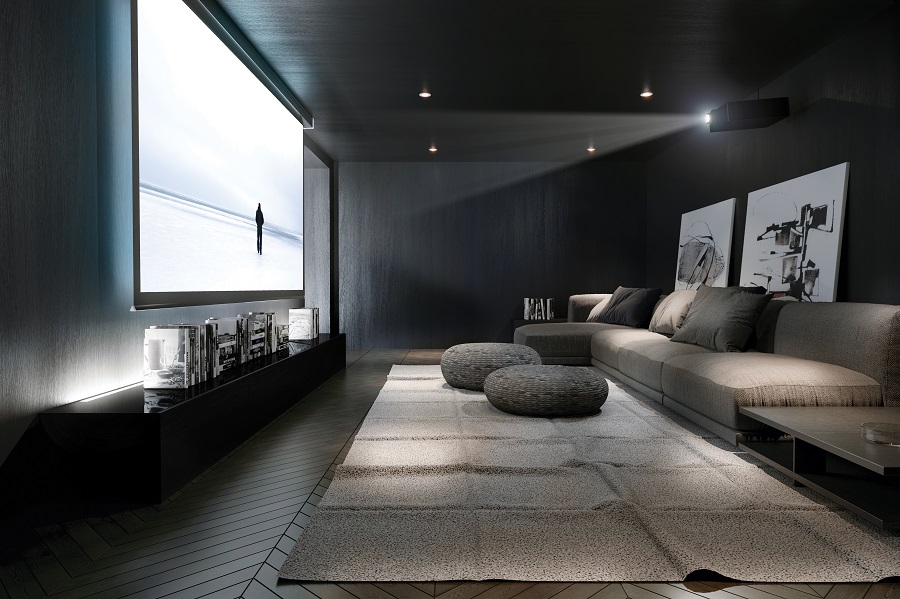These Movies Will Make You Want to Upgrade Your Home Theater
Today’s Films Look Best with the Latest HDR Capability

Some of you reading this may be wondering – what is HDR? We're glad you asked because this blog is for you. HDR is the acronym for high dynamic range, the feature that most differentiates the latest TV displays and projectors from models of just a few years ago.
Recently Regal Cinemas announced the closing of all their theaters in the U.S. due to the ramifications of the COVID-19 pandemic. Increasingly, home is the place to be for a great movie experience. If you are a cinephile, why not take all the money saved from expensive tickets and overpriced concessions and upgrade to the latest technology? HDR can make a tremendous difference in your picture quality, whether you use a flat panel or a projector in your media room or home theater.
As the leading home theater company in Roswell and metro Atlanta for over 30 years, you can trust GHT Group to know everything about home audio and video. Keep reading to learn more about HDR and some movies that will make the picture pop off the screen.
SEE ALSO: 3 Movies to Flex the Sound Muscles in Your Home Theater
HDR, Explained
The term HDR did not originate with displays; it started with the source - photography. If you have a recent Apple or Android phone, the camera likely has HDR capability. Put simply, it's about heightening the contrast between light and dark colors and making images that can show you all the detail and nuance that the human eye can see. When you use HDR on your smartphone camera, it does something that was once called bracketing in the days of film - capturing an image with different exposure values, which can enhance the quality of an image. In a camera, varying the shutter speed and aperture will produce different results in the way light is captured. With the modern processing power of today's smartphones, HDR automatically does that digitally and combines multiple shots to produce the best image with the most vivid color and contrast.
HDR in TV displays and projectors is about improving the image, but in a different way. It takes the original image – one expertly filmed in a specific way by a professional, not synthesized by software – and brings it to the screen in all its color, contrast, and detail. To do that well, complex technologies are needed, but we’ll attempt to simplify it here. One is high brightness capability. The ability of a TV display (or projector) to get very bright is critical to make whites white and colors pop. Another critical piece is the ability to precisely control that light so that blacks are really black in dark scenes, and colors can be infinitely varied and contrasted. And lastly, processing power and firmware make all the difference in bringing it all to life, as speed and control of all these elements make all the difference between a merely good picture and a great one.
HDR Flavors
Several HDR standards and implementations exist. It's complicated to get into detail in this space, but suffice it to say they are variations on the same theme, with some having some small advantages. HDR10 is a standard that meets accepted criteria in the electronics industry for color and contrast capability. Dolby Vision was developed by Dolby Labs originally for commercial cinemas and can dynamically vary – scene by scene – the color and contrast data for displays to use. HDR10+ is Samsung’s approach to incorporating the dynamic capability of Dolby Vision within the HDR10 specification. HLG is an HDR specification designed to be easier to implement for the broadcast world. You will see equipment from major manufacturers support some or even all of these HDR implementations.
What Equipment Supports HDR?
Most new TV displays from major brands support HDR today, and many support multiple standards. However, for the best performance, look for flat panels with a couple of technologies. One is OLED, a self-lighting panel technology that produces superb colors and dark, deep blacks. In LCD panels, models with a full array backlight with many zones have the control to create the brightness and contrast necessary to make the best HDR content genuinely shine. GHT is particularly partial to Sony TVs and projectors, which employ a variety of technologies along with arguably the industry’s best image processing to produce superior picture quality across their high-end products.
The Best Content to Show Off HDR
Now to the fun part – what to watch in HDR? One of the easiest shows to enjoy on your new HDR-capable screen is Netflix’s Our Planet. This gorgeously filmed series features Dolby Vision and offers some of the most beautiful 3D-like imagery of nature anywhere.
The best HDR displays can make very dark scenes more than a jumble of gray and black. While all Harry Potter movies tend to have lots of dark scenes, Harry Potter and the Deathly Hallows Part 2 has many of them. HDR versions will let you appreciate all the incredible detail that goes into the cinematography. Any movie about space is going to have lots of black, as well as amazing light bouncing off astronauts and spaceships. Films like Gravity, Interstellar, and The Martian will all dazzle the senses in HDR.
Looking for something with action and fun? Avengers: Endgame and Aquaman will test the limits of your new HDR screen, with lots of computer-generated imagery (CGI) that pushes the boundaries of color and light.
Make the most of your home entertainment by upgrading to the latest video and audio tech in your media room or theater. To get started, call us at (770) 955-8909, contact us here, or use the chat box below to connect with us right away. We look forward to working with you!